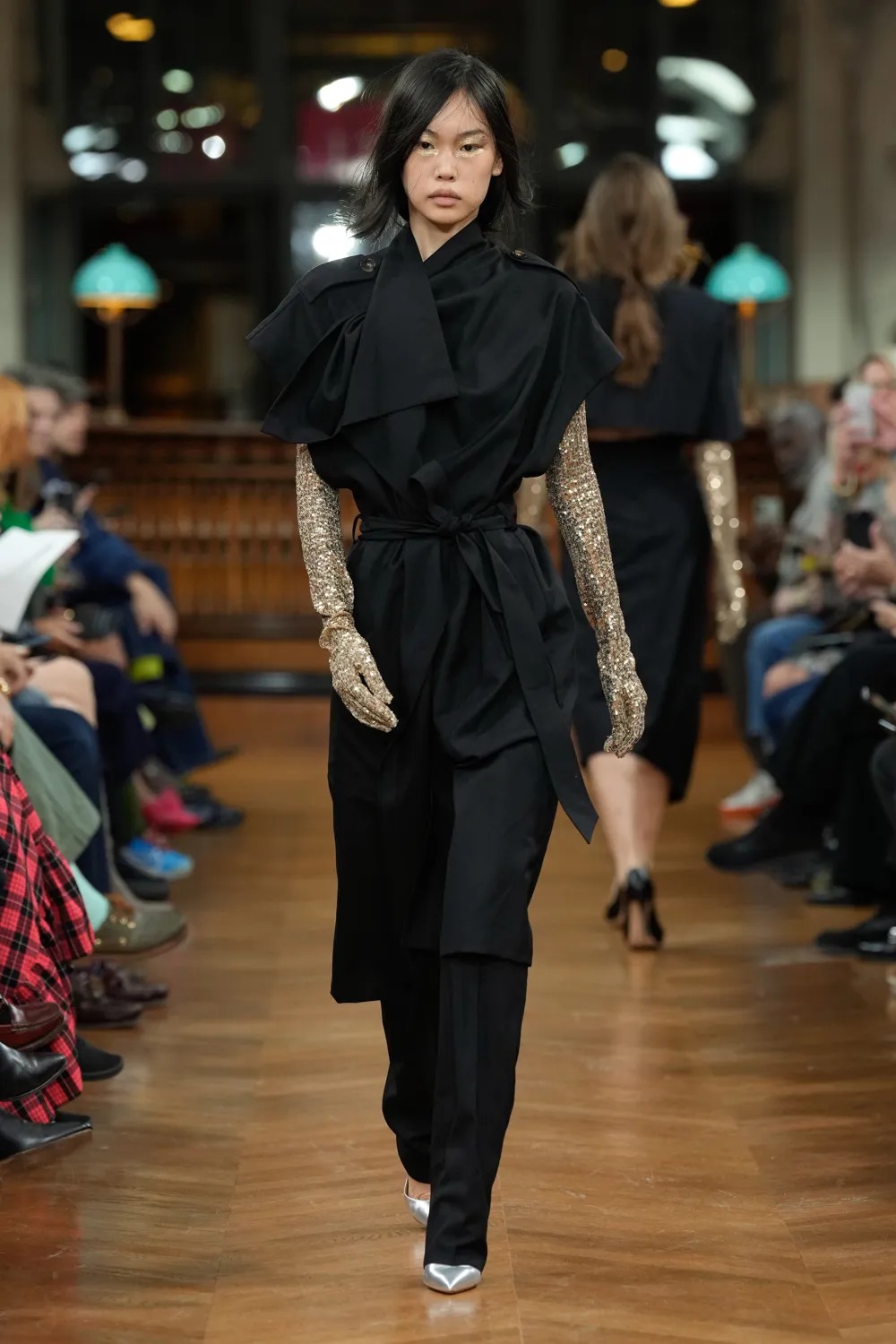Lutz Huelle’s spring show took place at the INHA, the library of the Institut National de l’Histoire de l’Art—a venue worthy of winning the award for The Most Stunning Location of Paris Fashion Week. Huelle also deserves recognition for presenting one of the most delightfully clever and inventive collections of the week, proving that, despite a limited budget, with good ideas, a skillful handling of the métier and a sense of humor, you can deliver a knockout show.The wood-paneled library of the INHA is housed in the grand Salle Labrouste, a 19th-century marvel. To grasp its magnitude, it holds 1,800 manuscripts, 20,000 rare books, 30,000 prints, and 45,000 autographs. “When you consider that books have been burned or banned in some parts of the world, the fact that this place was built to safeguard and share knowledge is truly amazing,” Huelle remarked. Its frescoed high ceilings are topped by domes “round and ample like crinolines,” that apparently inspired the architecture. “There’s an echo of fashion here,” Huelle noted. “Everything we create builds on what came before us. If you consider how much progress is represented in this space—and fashion is progress, always evolving, always at the forefront of who we are.”Huelle’s inspiration for the collection sparked when he spotted a couple on the street, dressed in formal wear—the man in a sharp suit, the woman in a flowing evening gown. This encounter made him contemplate the gap between these two wardrobe archetypes, and explore how he could gradually transform a traditional blazer-and-trousers ensemble into a dress suitable for special occasions.To do so, he played a sort of cut-and-paste charade, where he started slicing off a suit at the waist, using the bottom part as a skirt. From there he went inventive, reworking and assembling wardrobe staples and trimmings—a crisp tuxedo shirt (accordion-pleated at the waist and made into a bustier), an oversized bomber (the front was cut out and lined with lace exposing its layers), and lengths of lace ribbons (left dangling from a cotton T-shirt, attached on the waist of a blazer, or trailing behind a satin dress). One of the standout pieces was a silver and black jacquard evening bustier top stitched to a men’s white poplin shirt—it practically begged to be part of your wardrobe. Equally attractive was a voluminous duchesse opera coat, featuring horizontally-pleated pagoda sleeves, replicating the vertically-pleated bib of a tuxedo shirt.Huelle wears his remarkable creativity and skills with such levity, it feels almost ridiculously effortless—you could imagine him cleverly crafting an entire collection from a simple white T-shirt in no time, and with no pretense.


